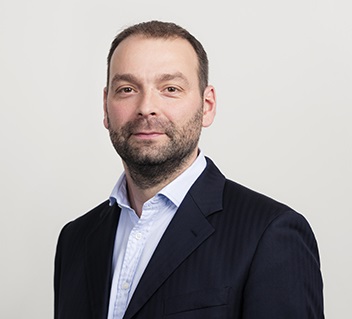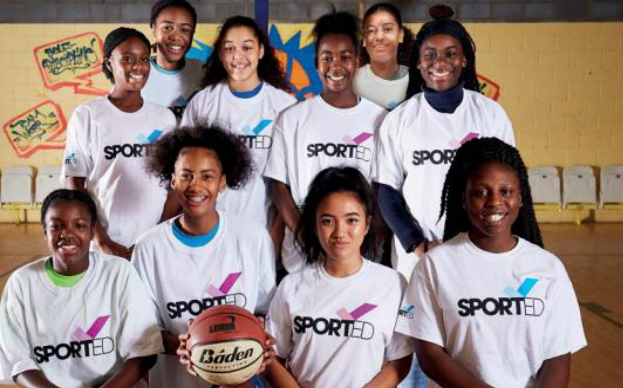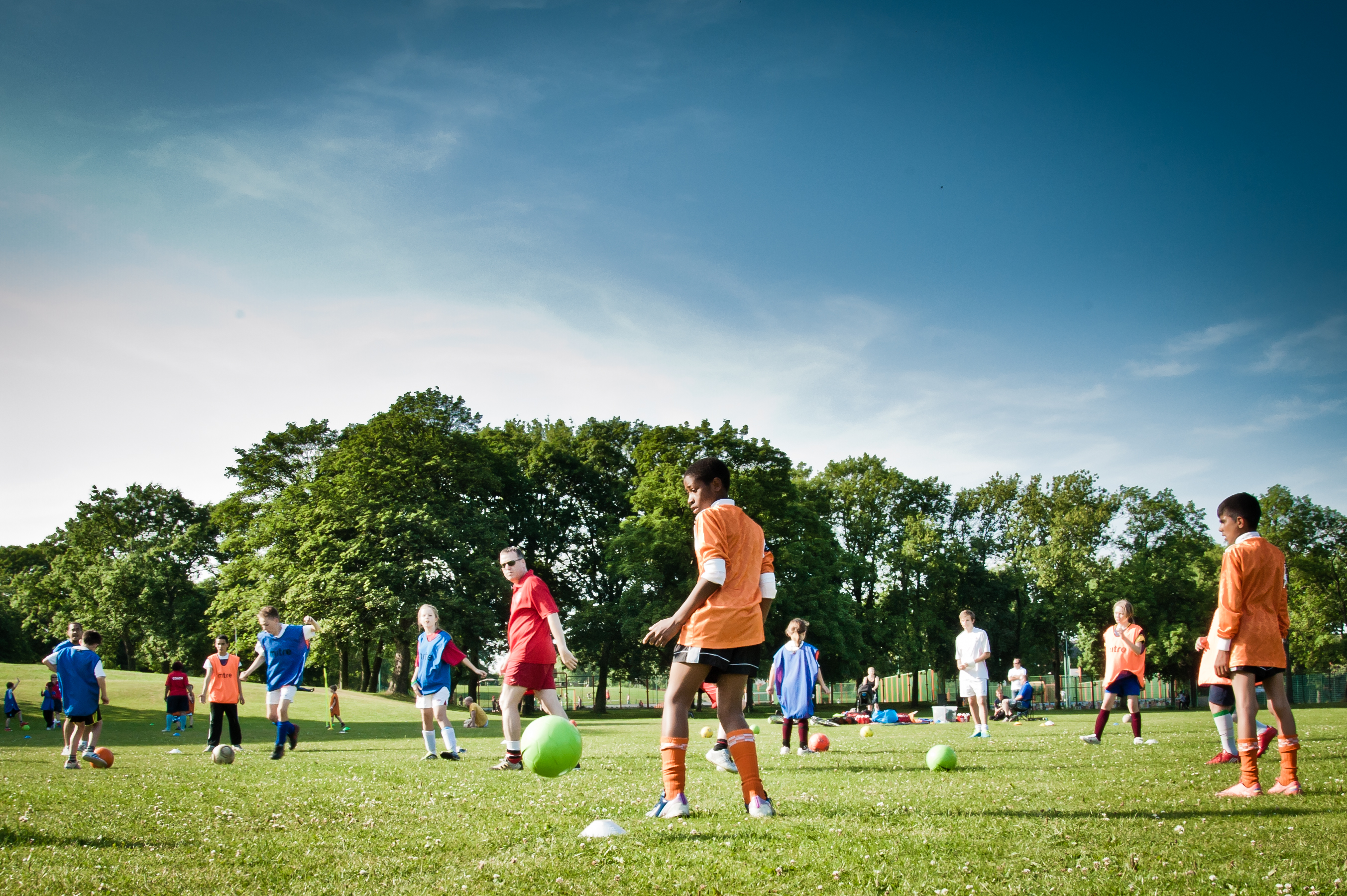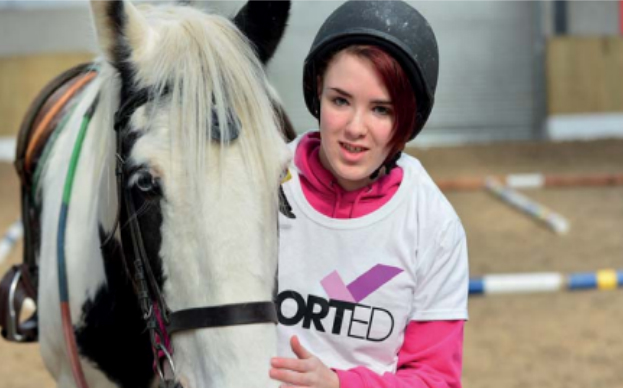 Each month ConnectSport works with the Sport for Development Coalition to create a 'call for articles'. In May 2019 articles will focus on the contribution of grassroots and community sport to the Sport for Development sector, starting with Tom Burstow, Deputy Chief Executive at Sported. To submit your article, contact hello@connectsport.co.uk.
Each month ConnectSport works with the Sport for Development Coalition to create a 'call for articles'. In May 2019 articles will focus on the contribution of grassroots and community sport to the Sport for Development sector, starting with Tom Burstow, Deputy Chief Executive at Sported. To submit your article, contact hello@connectsport.co.uk.
Across the UK there are thousands of grassroots community sport and youth groups using sport to tackle locally-specific problems and issues, whether it’s high rates of anti-social behaviour or improving community cohesion. What’s unique about these groups is that they are nearly always born out of a pressing need in the local area, with residents taking the initiative and responsibility on their shoulders to address the issues and make a real difference to their community.
Rather than programmes or solutions being imposed ‘top down’ from external organisations which may not fully understand the nuances of the local community, these groups offer a ‘bottom-up’ approach - identifying, creating and then delivering local solutions for local problems. And it’s exactly these groups that Sported has been enabling over the last 10 years.
The challenge is that these small, predominantly volunteer-led groups have borne the brunt of years of public spending cuts. It’s estimated that council funding for youth services has plummeted by almost two-thirds (62%), from just over £1bn in 2008-09 to £388m in 2016-17. And the predictable result? Since 2010, hundreds of youth clubs have closed their doors for the last time and young people from our most deprived communities have been left with nowhere to go and nothing to do.

The public health approach to tackling the root causes of youth violence has put the survival of community groups back in the spotlight. Coupled with the social outcomes outlined in DCMS’ Sporting Future strategy and the focus of the national sport councils on decreasing inactivity amongst under-representative groups – be it low socio-economic, women and girls, disabled and certain BAME groups – and arguably grassroots sport and youth groups collectively offer one of the best and most cost-effective solutions for tackling these pressing issues in the areas where it’s needed most. The good news is that these groups don’t need to be reinvented or established, a thriving network already exists. What they do need however is support, resources and investment to continue and evidence the great work they are already doing and build upon their success.
At Sported we are trusted experts in building the capacity and sustainability of community groups, with nearly 3,000 members across the length and breadth of the UK. The very nature of these groups – small, largely volunteer dependent, and with shoestring budgets – means funding is understandably front-of-mind. But part of our work in building their capacity is helping to identify and improve the operational pillars that underpin their wider ability to raise and spend funding efficiently and effectively.
PROACTIVE
For example, it’s not unusual for grassroots groups to be led and run by one main person, which puts them at risk if for whatever reason that person is not able to continue delivering. Or it could be a reliance on one income stream, which again increases their vulnerability to economic changes. There are numerous factors that underpin a group’s capacity and sustainability. Through Sported’s Capacity Model we aim to build a complete picture of our members’ organisational health to help them identify the risk factors and then work closely with them to minimise, whilst at the same time building proactive plans to help them achieve their vision.
One of the biggest challenges facing grassroots sport groups is a lack of capacity and knowledge gap in specific operational areas fundamental for long-term success; for example business planning, financial management, fundraising or marketing. At Sported we fill this skills gap by carefully matching and placing our members with skilled volunteers who provide long-term, one-to-one business mentoring support on the group’s identified need. Working closely for up to three months, they support in the development of structured organisational plans and transfer their working knowledge to leave them better equipped for the future. To borrow the well-known charity analogy, it’s very much about providing the ‘fishing rod’ not the ‘fish’.
This same ‘fishing rod’ approach extends to helping our members improve their knowledge of engaging specific groups and evidence their social impact. For example, our Project 51 programme run in partnership with Women in Sport is helping community groups in deprived areas become more inclusive by sharing the knowledge and insight on how to better engage and retain women and girls in sport and physical activity.
The sector has made great strides in articulating its impact. The development of the DCMS outcomes has provided a helpful framework within which Sport for Development work can be measured. A significant challenge remains however at the grassroots level, where many groups lack basic knowledge in the area of impact measurement and/or may simply not have the time, resources or capacity amid their many other responsibilities. This is reflected in the findings of our own Capacity Model; some 72% of Sported members receiving support had no prior knowledge or weren’t sure how ‘impact practice’ applied to their group.
KNOWLEDGE
One of the biggest steps we can take to build the evidence base for the sector and get more community groups framing their work against the DCMS’ outcomes is to bridge this knowledge gap. We need to make ‘impact practice’ more accessible and less daunting to the grassroots.
We need to frame it around what it can do for the group, as much as the wider sector and Government. For example, how impact insight can be used to improve the effectiveness of their programmes or help to secure more funding. At Sported we’ve done this by partnering with organisations such as Inspiring Impact and taking our members through a structured programme of support to help them better understand, embed and utilise impact measurement into their day-to-day activities.

Empowering community groups to measure their impact and better plan for their futures gives them a clearer sense of direction and helps demonstrate to funders how their investment will make a difference. Ultimately, with more structure and longer-term plans in place we enable the community leaders and coaches to direct their resources away from the ad-hoc operational duties that may previously have eaten up their time, towards where and what they do best – inspiring and changing the lives of the young people they work with.
Whilst short-term funded programmes and initiatives may come and go, grassroots sport groups are there for their communities for the long run, in the good times and the bad. It’s exactly because of their longevity and the consistency of support they offer that they can have such a long-lasting positive impact on young people’s behaviours, attitudes and aspirations. It’s why we need to recognise and protect what we’ve already got. It’s why capacity building and impact practice is so important.
Sported will soon be publishing the findings of exciting new research looking at the impact of community sport clubs in low socio-economic areas. Watch this space!













